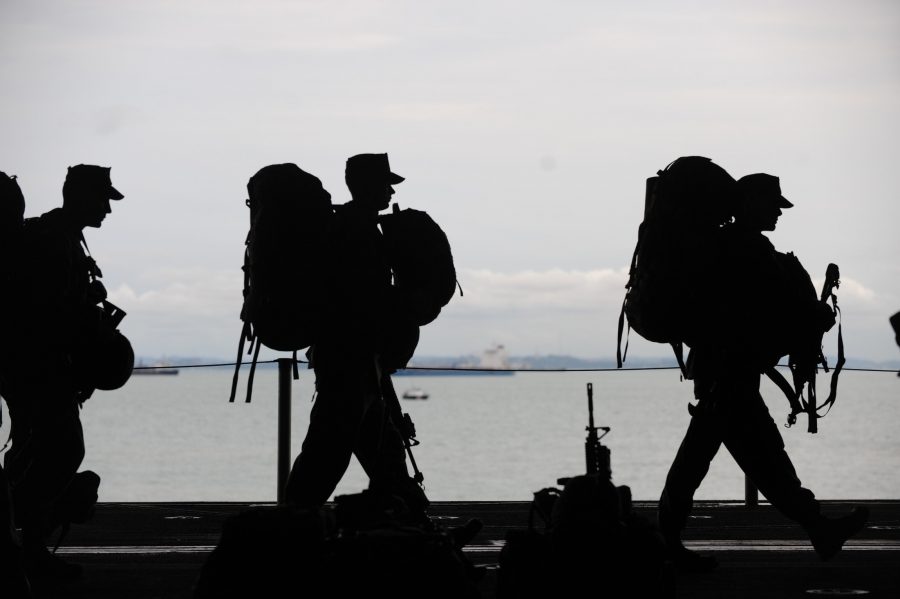I have long maintained that films are powerful indications of the social mood and values of a society. Within that context, the comparison between two recent war films is highly informative as to the disparate perspectives on the importance of a strong military in Britain and America.
Firstly there is 1917. Co-written and produced by Sam Mendes. As an advocate of correcting the inaccuracy engendered by Lloyd George’s besmirchment of General Haig and his generals, my book lions Led by Lions explains how inaccurate that portrayal really was. Indeed that on the contrary, British innovation and adaptation resulted in the defeat of Germany. Thus I had high hopes that this new film might be part of a new national shift in reality towards a new sense of pride over Britain’S Victory in 1918. However, sadly from my perspective, this film was a tremendous disappointment on multiple fronts.
1. Whilst the uniforms, imagery, and music were excellent, in a war when there were so many truly amazing stories that could have been told, to manufacture a rather ludicrous one was a lost opportunity and worse a misdirection.
2. The idea of sending two men rather than a platoon, across nine miles of contested ground totally lacks credibility when the lives of 1600 men were at stake.
3. The idea that two battalions had followed up hard on the heels of a strategic German withdrawal to a new strengthened defensive line. Consequently, they were miles out in front but had got a message back that they were attacking at dawn just 18 hours away was fanciful, when the fluidity of the chase would have precluded such a pre-planned attack and especially when field telephones were commonplace.
4. Whilst commonwealth soldiers made a huge contribution to the battle on the Western Front, which is not well known or appreciated, a historical image that should be remedied, The films representation of a smattering of black faces and one Sikh, amongst pals regiments drawn from the same town and villages and regional regiments, was a gross miss-representation of how the war was fought. As if today’s political correctness could be used to rewrite history!
5. The scene where a small group of soldiers driving through no mans land, lead by a staff officer who depicted the arrogance associated with the image of lions led by donkeys was ridiculous. Especially as infantry was not motorized in the front line in 1917, as depicted.
6. When the lone survivor tried to cross a bridge over a canal, the bullets came from the right, hitting the bridge, but in fact, the sniper was later to be shown to be positioned to the left of the bridge on the upper floor of a building, suggesting that his bullets could fire around corners.
7. Lastly, when finally our messenger hero reached the lost two battalions, who were supposed to be hot on the heels of the retreating Huns, they were occupying freshly dug trenches and support bunkers that would have taken a month to dig!
The overall impression was that the film had been made and shaped by liberal values that sought to enforce the pointlessness of war and the Lloyd Georgian perspective that the costly war was the responsibility of poor generalship. The sadness is that potential filmgoers know so little of this period that they would not have understood just how bad this film really is, as a betrayal of all those that fought and died in the war. Most of all it seemed to reinforce the sentiment that defence is a low priority of the British nation today, just as the world has become a very dangerous place and the conditions that lead up to WW1 are being repeated in today’s geopolitics. Shame on you Sam.
Then there is the Battle of Midway an American film that is probably one of the best war films I have seen in a long time. It represents the Japanese maritime hegemonic challenge to America. Starting with the Pacific wars outbreak and the strategic events of the attack on Pearl Harbour, the battle of the coral sea and the lead into the battle of midway. It then details the battle with accuracy and great realism by representing events and key people accurately including building the profile of one squadron and its most maverick flyer who in the battle landed bombs onto two Japanese aircraft carriers, creating the turning point in the pacific war. It depicts that this great pivotal moment came down to the actions of one maverick and highly courageous and skilful pilot in a most engaging story.
The accuracy and visuals of this film are stunning as is the acting of the key characters. It brings home just how close the American victory really was. But most of all it is a film that reminds the viewer of the last pacific war dominated by the US Navy growth and success. In so doing it lays the groundwork for the understanding and context of the importance of the current naval arms race in the pacific with China. Whilst at the same time Midway accentuates the dependance that America has with its military power base past, present and future.Which is in stark contrast to 1917 and Britain’s ambivalence to its military investment and the maintenance of an effective defence capability especially when it is aspiring to once more become Global Britain.







